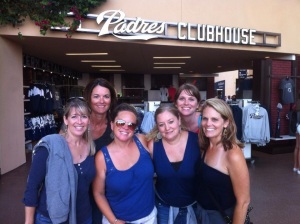Every year San Diego hosts Comic-Con, an absurdly large convention that started as a way for comic book artists and writers and their fans to interact. Over the years it has grown exponentially, to a multi-genre entertainment convocation, that boasts an attendance of over 130,000 fans. I have friends who make the pilgrimage every year, and, in turn, I find it necessary to tease them for it. “Bunch of nerds.” In truth, I love when people are passionate about their hobbies, work, or really anything. Passion is what makes people interesting.
Immediately following Comic-Con, the city of San Diego was infested with teachers. I scoffed at my friends noting, “I hope the nerd smell is gone when I get there.” Some may argue this contamination was worse than the week before. 4,000 teachers arrived at the Town and Country Convention Center, as they do every year, (and 4,000 more the week after), to be trained and inspired by AVID, a program that has been incredibly successful for over 30 years. AVID, or Advancement Via Individual Determination, is a global nonprofit organization designed to give students the tools they need to go to college. There’s nothing flashy, nothing trendy, it’s all about teaching kids how to write, ask questions, collaborate with others, read critically and stay organized.
As I sat in my “strand”, or class, learning about proven effective strategies to teach students, and actually walking through the steps of some fun activities like hosting a World Cafe, writing Mentor Texts, and rattling off impromptu speeches, it was obvious. I was just as much of a nerd as any of those fanboys at Comic-Con. I was totally geeking out on graphic organizers, sentence starters and rubrics. The smell of my passion and enthusiasm was polluting the warm San Diego air, and I knew it was awesome.

What was even better than total teaching nerdery was that I got to do it next to my fellow Chilton teachers. Eight of us traveled to San Diego, learning and collaborating from 8am to 5pm for three days, not to mention riding in trolleys and taxis shoulder to shoulder, eating every meal together, taking in a Padres game and sharing laughter all along the way. Not everyone gets to work with friends, I just happen to be astonishingly lucky. These colleagues and friends certainly fuel my enthusiasm for teaching each and every day.
The truth is, I’ve been a nerd my whole life, and I love nerds. People who are ardent, zealous and just truly enjoy the things in their life are the people I enjoy being around. So don’t be afraid to hold up that nerd flag and let it fly. Let’s let our scent fill every city we grace.
Even John Green gets it. 🙂